
English Grammar for Business
"Let's Learn, Explore, and Connect to the World"

Clarity & Concision in Communication
- Jenelie Hijosa
- English Grammar for Business

Introduction

Strong and clear communication is essential for achieving accomplishments in business negotiations. Whether you’re closing a multi-million-dollar deal or resolving an internal conflict, the ability to convey your message clearly and concisely can make the difference between success and failure. In the fast-paced world of business, where decisions are often made quickly, and misunderstandings can lead to significant setbacks, mastering the art of communication is essential.
Clarity and concision are two critical components of effective communication. Clarity involves expressing your ideas in a straightforward and easy-to-understand manner, ensuring that your message is not lost in translation. On the other hand, concision means delivering your message succinctly, avoiding unnecessary details that could dilute the core of your message. Together, they form the bedrock of efficient and impactful communication, especially in high-stakes negotiations where every word counts.
This blog intends to highlight the importance of clarity and brevity in business negotiations. We will discuss the meanings and significance of these concepts, offer practical advice for enhancing communication skills, and identify common challenges along with strategies to overcome them. Furthermore, we will review real-life case studies that showcase the success of clear and concise communication in negotiations.
By the end of this blog, you will have a comprehensive understanding of how to enhance your communication skills to become a more effective negotiator. Whether you’re a seasoned professional or new to the field, these insights will equip you with the tools you need to navigate negotiations with confidence and precision.
Understanding Clarity in Business Communication
Definition of Clarity
Clarity in business communication means delivering messages in a straightforward, precise, and unambiguous manner. It involves using language that is easily understood by the audience, leaving no room for misinterpretation. In essence, clarity ensures that the intended message is accurately conveyed and comprehended, facilitating effective interaction and decision-making.
Importance of Clear Communication in Negotiations
Clear communication is paramount in business negotiations for several reasons:
1. Reduces Misunderstandings: Effective communication reduces the likelihood of misunderstandings that may result in conflicts, delays, or unsuccessful negotiations.
2. Builds Trust: When negotiators communicate clearly, it fosters trust and transparency, essential components for building strong business relationships.
3. Enhances Efficiency: Clear communication speeds up the negotiation process by ensuring that all parties are on the same page, making it easier to reach agreements.
4. Improves Outcomes: Negotiations are more likely to result in mutually beneficial outcomes when both parties clearly understand the terms and conditions being discussed.
Examples of Clear vs. Unclear Communication
Clear Communication Example:

“We propose a 10% discount on orders over 1,000 units, effective from August 1st.”
Unclear Communication Example:
“We might be able to offer some discounts on larger orders sometime in August.”
The clear example specifies the discount rate, the condition, and the effective date, leaving no room for ambiguity. In contrast, the unclear example is vague and open to multiple interpretations, potentially leading to confusion and prolonged negotiations.
Tips for Achieving Clarity

1. Use Simple Language: Steer clear of complex vocabulary and technical jargon that might be unfamiliar to everyone involved. Using simple, everyday language makes your message more accessible and easier to understand. For instance, instead of saying “utilize,” just say “use.”
2. Avoid Jargon: Business negotiations often involve participants from diverse backgrounds. Using industry-specific jargon can alienate those who are not familiar with the terminology. Always consider the audience and strive to use universally understood terms. For example, replace “synergy” with “working together.”
3. Be Specific and Concrete: Vague statements can lead to misinterpretations. Be specific and concrete in your communication to leave no room for doubt. For instance, instead of saying “soon,” provide a specific timeframe, like “by the end of this week.”
4. Active Voice over Passive Voice: The active voice makes sentences clearer and more direct, while the passive voice can make them sound vague and impersonal. Compare these two sentences:
- Active: “We will deliver the product by Friday.”
- Passive: “The product will be delivered by Friday.”
The active voice clearly identifies who is responsible for the action, enhancing the clarity of the message.
Implementing These Tips

Implementing these tips requires practice and a conscious effort to evaluate your communication style. Start by reviewing your emails, reports, and verbal communications for instances of complex language, jargon, vagueness, and passive constructions. Replace them with simpler words, clear terms, specific details, and active voice. Over time, these practices will become second nature, significantly enhancing the clarity of your business communication.
In the end, clarity is a crucial element of effective business communication, particularly in negotiations. By using simple language, avoiding jargon, being specific and concrete, and favoring the active voice, you can ensure that your messages are clear, reducing misunderstandings, building trust, and leading to more successful negotiation outcomes.
The Role of Concision in Business Negotiations
Definition of Concision

Concision in business communication refers to conveying information in a brief and direct manner without sacrificing clarity or essential details. It involves eliminating unnecessary words and focusing on the core message, ensuring that the communication is efficient and to the point. Concise communication helps in keeping the attention of the audience, making it easier to convey important information effectively.
Why Being Concise Matters in Negotiations
In business negotiations, time is often of the essence. Being concise helps in several ways:
1. Saves Time: Concise communication reduces the time spent on discussions, allowing negotiators to reach conclusions more quickly.
2. Maintains Attention: Long-winded explanations can lead to loss of focus. Concise communication keeps the audience engaged and attentive.
3. Enhances Persuasiveness: Clear and concise messages are more persuasive because they are easier to understand and remember.
4. Reduces Misunderstandings: By eliminating superfluous information, concise communication minimizes the risk of misinterpretation.
The Pitfalls of Over-Communication
Over-communication can dilute the core message and lead to confusion. It often results in:
1. Information Overload: Providing too much information can overwhelm the audience, making it difficult for them to identify the key points.
2. Loss of Focus: Excessive details can divert attention from the main issues, causing the discussion to veer off track.
3. Increased Misunderstandings: More words can create more opportunities for misinterpretation, leading to potential conflicts or delays.
Techniques for Concise Communication

Eliminate Redundancies
Redundant words and phrases add unnecessary length to your message without adding value. For instance, instead of saying “each and every,” simply say “each.” Review your communication for repetitive or superfluous words and remove them to streamline your message.

Focus on Key Points
Prioritize the most critical information and present it upfront. Determine the essential points that need to be communicated and ensure they are highlighted. This method ensures that your audience quickly understands the key points.

Use Bullet Points and Summaries
Using bullet points breaks down complex information into smaller, easier-to-understand pieces.
Summaries provide a quick overview of the main points, reinforcing the central message.
For example, instead of writing a lengthy paragraph, use bullet points to outline the key terms of a contract.

Practice Brevity in Writing and Speech
Get into the habit of being brief and to the point in both written and verbal communication. This practice involves reviewing and editing your messages to remove unnecessary words and focusing on delivering your point succinctly. For instance, in meetings, make your points clearly and avoid rambling.

Implementing Concise Communication
Achieving concision requires regular practice and self-awareness. Start by editing your emails, reports, and verbal pitches, aiming to reduce wordiness while maintaining the core message. With time, concise communication will become a natural part of your negotiation strategy, enhancing your effectiveness and efficiency.
In summary, concision is crucial in business negotiations because it saves time, maintains attention, enhances persuasiveness, and reduces misunderstandings. By eliminating redundancies, focusing on key points, using bullet points and summaries, and practicing brevity, you can ensure your communication is concise and impactful.
Strategies for Enhancing Clarity and Concision in Negotiations
Effective communication in business negotiations requires both clarity and concision. Here are comprehensive strategies to enhance these crucial aspects before, during, and after negotiations.
Preparing for the Negotiation

Know Your Objectives
Clearly establish your goals and desired outcomes before starting the negotiation. Understanding your objectives helps you stay focused and communicate your needs effectively. For instance, if you’re negotiating a contract, determine the key terms and conditions you must achieve.

Research and Anticipate Questions
Thorough preparation involves researching the other party’s interests, background, and potential questions they might ask. Anticipating these questions allows you to prepare clear, concise responses. For example, if you’re negotiating a pricing agreement, understand the market rates and the other party’s budget constraints.

Organize Your Thoughts and Materials
Arrange your thoughts and materials logically to ensure a smooth flow of information during the negotiation. Create an outline or checklist of the key points you want to cover. This organization helps you stay on track and communicate your message clearly. For example, have a list of bullet points summarizing your main arguments and data supporting your position.
During the Negotiation

Stay on Topic
Maintain focus on the issues at hand and avoid digressions. Staying on topic prevents confusion and ensures that all relevant points are addressed. If the conversation starts to drift, gently steer it back to the main issues. For example, if the discussion veers into unrelated topics, say, “Let’s circle back to our primary objective.”

Use Visual Aids and Summaries
Using visual aids like charts, graphs, and slides can help simplify complex information and make your points more memorable. Summarizing key points at regular intervals reinforces your message and ensures mutual understanding. For instance, use a graph to show cost savings over time or summarize the main terms of an agreement at the end of each discussion point.

Listen Actively and Confirm Understanding
Active listening means fully concentrating on the speaker, recognizing their points, and responding thoughtfully. Confirming understanding by paraphrasing their statements or asking clarifying questions ensures that both parties are on the same page. For example, say, “If I understand correctly, you are concerned about the delivery timeline. Is that right?”
Post-Negotiation Follow-Up

Summarize Agreements in Writing
After the negotiation, summarize the agreements in writing and share them with all parties involved. This written summary serves as a reference point and helps prevent misunderstandings. For example, send an email detailing the agreed-upon terms, timelines, and responsibilities.

Seek Feedback and Reflect on Communication Effectiveness
Request feedback from the other party and reflect on your communication effectiveness. Identifying what was successful and areas needing improvement can help you refine your negotiation skills. For instance, ask the other party if there were any points that were unclear or if they have suggestions for improving future communications.
Implementing These Strategies

Implementing these strategies requires a proactive and systematic approach. Before the negotiation, dedicate time to thoroughly prepare by defining objectives, researching, and organizing your materials. During the negotiation, stay focused, use visual aids, and practice active listening. After the negotiation, document the agreements and seek feedback for continuous improvement.
In summary, enhancing clarity and concision in business negotiations involves thorough preparation, focused communication during the negotiation, and effective follow-up. By knowing your objectives, anticipating questions, organizing your thoughts, staying on topic, using visual aids, listening actively, summarizing agreements, and seeking feedback, you can significantly improve your negotiation outcomes. These strategies not only facilitate clear and concise communication but also build trust and foster successful business relationships.
Common Challenges and How to Overcome Them
Business negotiations often present various challenges that can hinder effective communication.Tackling these challenges is essential for reaching successful outcomes. Here are some common obstacles and strategies to overcome them.
Dealing with Complex Information
Challenge: Negotiations frequently involve complex information, such as technical details, financial data, or legal terms. This complexity can lead to misunderstandings if not communicated clearly.
Strategy: Simplify complex information by breaking it down into manageable parts. Use visual aids like charts, graphs, and diagrams to illustrate key points. For example, instead of presenting raw data, use a graph to show trends or comparisons. Additionally, provide summaries and emphasize the most critical information to ensure your message is understood.
Handling Emotional Reactions
Challenge: Emotions can run high during negotiations, potentially leading to conflicts or irrational decisions. Emotional reactions can disrupt the flow of communication and obscure the core issues.
Strategy: Maintain a calm and professional demeanor. Practice active listening and acknowledge the other party’s emotions without letting them derail the negotiation. For example, if the other party becomes angry, calmly acknowledge their frustration and suggest taking a short break to cool down. It’s also helpful to focus on interests rather than positions, emphasizing common goals and seeking mutually beneficial solutions.
Navigating Cultural Differences
Challenge: Cultural differences can impact communication styles, expectations, and interpretations. Misunderstandings arising from these differences can hinder negotiation progress.
Strategy: Develop cultural awareness and sensitivity. Research the cultural backgrounds of the parties involved and adapt your communication style accordingly. For example, some cultures may value indirect communication and harmony, while others prefer direct and assertive approaches. Use respectful language, and be mindful of non-verbal cues, such as gestures and body language. If you’re uncertain, seek clarification to ensure comprehension.
Strategies for Overcoming These Challenges
Preparation and Clarity
Thorough preparation helps mitigate the impact of complex information and emotional reactions. Clearly define your objectives and anticipate potential challenges. Prepare concise summaries and visual aids to support your points.
Active Listening and Empathy
Active listening involves fully engaging with the speaker, showing empathy, and responding thoughtfully. This approach helps manage emotions and builds trust. For example, restate the other party’s concerns to show understanding and validate their feelings.
Flexibility and Adaptability
Stay flexible and modify your communication style to match the context and audience. This flexibility is vital when addressing cultural differences. Tailor your approach to meet the preferences and expectations of the other party.
Seek Common Ground
Focus on finding common ground and shared interests. Emphasizing mutual goals can help bridge gaps caused by complex information, emotional reactions, or cultural differences. For example, if both parties prioritize a long-term partnership, highlight this common objective to foster cooperation.
Use Mediators or Facilitators
In particularly challenging negotiations, consider involving a neutral mediator or facilitator. This third party can help manage emotions, clarify complex information, and bridge cultural gaps, ensuring a smoother negotiation process.
In summary, overcoming common challenges in business negotiations requires a combination of preparation, active listening, cultural awareness, and flexibility. By simplifying complex information, managing emotions, understanding cultural differences, and employing these strategies, you can enhance your communication effectiveness and achieve more successful negotiation outcomes.
Case Studies: Effective Clarity and Concision in Real Negotiations
Case Study 1: Successful Contract Negotiation

In a recent contract negotiation between a software development company and a major client, the project’s success hinged on clear and concise communication. The company needed to secure a long-term contract for a custom software solution.
Approach:
- Clarity: The software company provided a detailed proposal that clearly outlined the project’s scope, timeline, costs, and deliverables. Technical jargon was minimized, and each section was presented with specific and concrete details.
- Concision: During meetings, the company used bullet points and visual aids to highlight key aspects of the proposal, ensuring that the client could easily grasp the essential points. Redundant information was eliminated, focusing only on critical details.
Outcome:
The client appreciated the straightforward communication and felt confident in the company’s ability to deliver. The contract was signed with minimal revisions, and the project commenced smoothly.
Case Study 2: Resolving a Workplace Dispute

In a mid-sized manufacturing firm, a dispute arose between two departments over resource allocation. The prolonged disagreement was affecting productivity and morale.
Approach:
- Clarity: The HR department facilitated a meeting where each side presented their concerns and needs using clear, specific language. Avoiding vague complaints, they focused on concrete issues and desired outcomes.
- Concision: The mediator summarized the key points from both sides and used a whiteboard to visually map out the main issues and potential solutions. This approach helped keep the discussion on track and prevented it from becoming bogged down in unnecessary details.
Outcome:
The clarity and concision in communication led to a mutual understanding of each department’s needs. They reached a compromise on resource allocation that satisfied both parties, restoring harmony and improving overall efficiency.
Key Takeaways from Each Case Study
1. Importance of Preparation: Both cases demonstrate the value of thorough preparation. In the contract negotiation, a well-prepared proposal with clear details made the difference. In the workplace dispute, organizing thoughts and presenting them clearly helped resolve the issue.
2. Use of Visual Aids: Visual aids, such as bullet points, charts, and whiteboards, effectively highlighted key points and kept discussions focused and concise.
3. Focus on Key Points: Eliminating unnecessary information and focusing on the essential aspects of the negotiation facilitated faster and more successful outcomes.
4. Active Listening and Summarization: Summarizing key points during discussions ensured mutual understanding and kept negotiations on track.
In summary, these case studies illustrate how clarity and concision in communication can lead to successful negotiations by ensuring that all parties understand the issues and agree on solutions efficiently.
Tools and Resources for Improving Business Communication
Recommended Books and Articles
1. Books:
- “Crucial Conversations: Tools for Talking When Stakes Are High” by Kerry Patterson, Joseph Grenny, Ron McMillan, and Al Switzler – This book offers strategies for effective communication in high-pressure situations.
- “Made to Stick: Why Some Ideas Survive and Others Die” by Chip Heath and Dan Heath – A guide to making your ideas clear and memorable.
- “The Art of Negotiation: How to Improvise Agreement in a Chaotic World” by Michael Wheeler – Insights into the flexibility and clarity needed in negotiations.
2. Articles:
- Harvard Business Review’s articles on negotiation and communication, such as “The Necessary Art of Persuasion” and “How to Negotiate with a Liar”.
Online Courses and Workshops
1. Online Courses:
- Coursera: Courses like “Successful Negotiation: Essential Strategies and Skills” from the University of Michigan.
- edX: Courses such as “Negotiation and Leadership” from Harvard University.
- LinkedIn Learning: Courses like “Communicating with Confidence” and “Negotiation Skills”.
2. Workshops:
- Dale Carnegie Training: Workshops focusing on effective communication and negotiation skills.
- The Negotiation Institute: In-person and virtual workshops on negotiation tactics and strategies.
Communication Tools and Software
1. Tools:
- Grammarly: A tool for ensuring clear and error-free written communication.
- Hemingway Editor: Enhances your writing by highlighting complex sentences and common mistakes, making it bold and clear.
- MindMeister: A mind-mapping tool that helps organize thoughts and present them clearly.
2. Software:
- Slack: Facilitates clear and concise team communication through organized channels.
- Zoom: Enables effective virtual communication with features like screen sharing and recording for clarity.
By leveraging these resources, you can significantly enhance your business communication skills, leading to more successful negotiations and professional interactions.
Conclusion
 Effective communication is crucial for successful business negotiations. In this blog, we have discussed the significance of clarity and brevity in ensuring messages are understood and acted upon efficiently.
Effective communication is crucial for successful business negotiations. In this blog, we have discussed the significance of clarity and brevity in ensuring messages are understood and acted upon efficiently.
We began by defining clarity and concision, highlighting their significance in minimizing misunderstandings, building trust, and enhancing the overall efficiency of negotiations. Practical examples illustrated how clear and concise communication can streamline negotiations, and we provided actionable tips such as using simple language, avoiding jargon, focusing on key points, and employing active voice.
We then discussed strategies for enhancing clarity and concision, emphasizing the importance of preparation, staying on topic, using visual aids, and summarizing agreements.
Case studies demonstrated the real-world application of these principles, showing how clear and concise communication can lead to successful outcomes in contract negotiations and conflict resolution.
In overcoming common challenges like dealing with complex information, handling emotional reactions, and navigating cultural differences, we offered strategies that promote effective communication and understanding. Additionally, we highlighted various tools and resources, including books, online courses, and communication software, to further develop these essential skills.
The impact of clarity and concision on business success cannot be overstated. Clear and concise communication fosters stronger relationships, speeds up decision-making processes, and ensures that all parties are aligned with the objectives.
 We encourage you to apply the strategies discussed in this blog to enhance your negotiation skills and communication effectiveness. By practicing clarity and brevity, you will be better prepared to handle the complexities of business negotiations and achieve successful outcomes.
We encourage you to apply the strategies discussed in this blog to enhance your negotiation skills and communication effectiveness. By practicing clarity and brevity, you will be better prepared to handle the complexities of business negotiations and achieve successful outcomes.
Call to Action
Engage with this content by reflecting on your own communication practices and identifying areas for improvement. Subscribe to our blog for more tips and insights on effective business communication. Share your experiences and strategies for achieving clarity and concision in negotiations in the comments section. Your feedback and stories can inspire others to enhance their communication skills and succeed in their professional endeavors.
References
- Deescalation Training. (n.d.). NHS conflict resolution training – effective and engaging. https://www.deescalation.training/nhs-conflict-resolution-training/
- Examples.com. (n.d.). How to avoid miscommunication – 14+ examples, how to stop. https://www.examples.com/english/communication/miscommunication/how-to-avoid-miscommunication.html
- QuantHub. (n.d.). Calibrate visuals in a data storytelling message. https://www.quanthub.com/calibrate-visuals-in-a-data-storytelling-message/
- ICGG. (2023, March 29). The one trick to making your presentation slower, not slower. The 15th International Conference on Geometry and Graphics. https://www.icgg2012.org/2023/03/29/the-one-trick-to-making-your-presentation-slower-not-slower/
- Two Minute English. (n.d.). Is it correct to say “as per your request”? https://twominenglish.com/is-it-correct-to-say-as-per-your-request/
- Sebenius, J. K. (2013). The art of negotiation: How to improvise agreement in a chaotic world. Harvard Business School. https://www.hbs.edu/faculty/Pages/item.aspx?num=44376
Latest Blogs

Past Continuous 4
English Blogs “Let’s Learn, Explore, and Connect to the World” Past Continuous 4 IV. Forming Questions and Negatives in the Past Continuous The ability to

Present Simple Continuous 1
English Blogs “Let’s Learn, Explore, and Connect to the World” Present Simple Continuous 1 I. Introduction to the Present Continuous Tense in English The present
Reading comprehension quiz
Check out our books and more!

Comic Collections : A Compilation of Daily Professional and Casual Conversations (Book 1)
Laugh and learn with ‘Comic Collections’ by Cassia North – a delightful dive into everyday conversations in professional and casual settings, now in a vibrant, humor-filled ebook. Perfect for all ages!
Check out our Blogs!
Read our everyday blogs and gain new knowledge, skills, and inspiration to support your learning journey here in SEKAEL.


Explore English Blogs to improve your speaking, listening, reading, and writing skills in real-life situations.



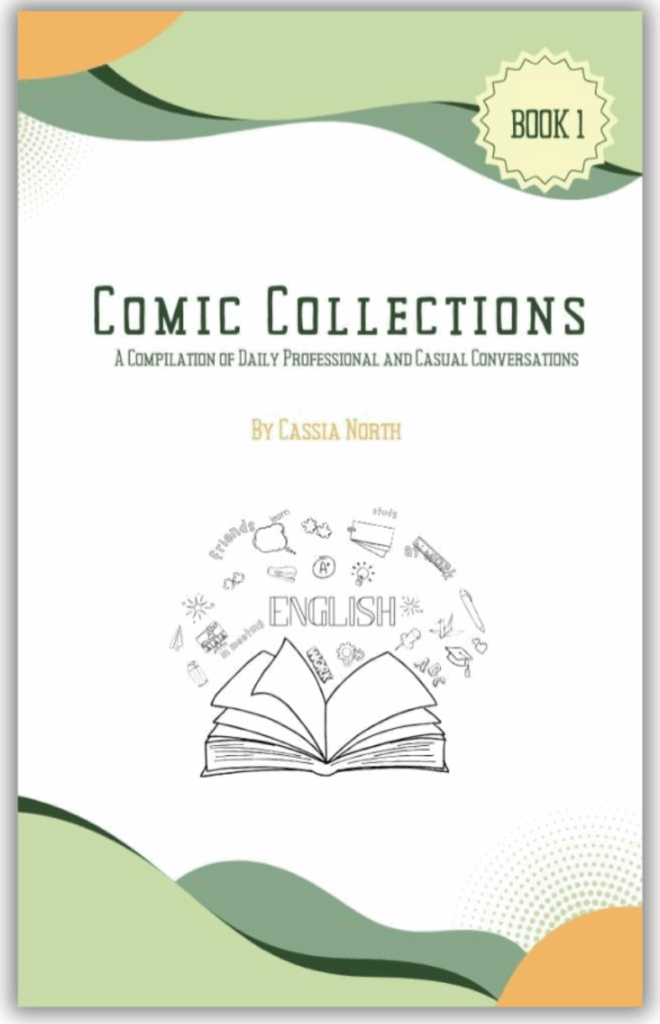


 The rise of digital technology over the past few decades has revolutionized the way we live, work, and interact with one another. Technology is now a fundamental part of our everyday lives, used for everything from communication and entertainment to advanced applications like virtual reality and artificial intelligence. This rapid advancement has brought about numerous conveniences and opportunities, enabling us to stay connected, informed, and productive like never before. However, along with these benefits, technology’s pervasive presence has also introduced challenges, particularly concerning our mental health.
The rise of digital technology over the past few decades has revolutionized the way we live, work, and interact with one another. Technology is now a fundamental part of our everyday lives, used for everything from communication and entertainment to advanced applications like virtual reality and artificial intelligence. This rapid advancement has brought about numerous conveniences and opportunities, enabling us to stay connected, informed, and productive like never before. However, along with these benefits, technology’s pervasive presence has also introduced challenges, particularly concerning our mental health. Understanding how technology affects our mental health is increasingly important. We must identify and address potential negative consequences as we rely more on digital devices. By studying both the benefits and drawbacks of technology and how it influences our minds, we can develop strategies to use technology more healthily. This blog aims to shed light on these aspects and provide practical insights into balancing digital and real life for better mental health.
Understanding how technology affects our mental health is increasingly important. We must identify and address potential negative consequences as we rely more on digital devices. By studying both the benefits and drawbacks of technology and how it influences our minds, we can develop strategies to use technology more healthily. This blog aims to shed light on these aspects and provide practical insights into balancing digital and real life for better mental health.


















 Parents and educators are pivotal in guiding children and adolescents toward healthy technology use. They can help young people navigate the digital world safely and effectively by fostering an environment that promotes balance and awareness.
Parents and educators are pivotal in guiding children and adolescents toward healthy technology use. They can help young people navigate the digital world safely and effectively by fostering an environment that promotes balance and awareness.
 In conclusion, educators and parents play a crucial role in shaping the digital habits of the younger generation. By modeling balanced behavior, providing education, and creating a supportive environment, they can help children and adolescents navigate the complexities of the digital world while maintaining their mental health and well-being.
In conclusion, educators and parents play a crucial role in shaping the digital habits of the younger generation. By modeling balanced behavior, providing education, and creating a supportive environment, they can help children and adolescents navigate the complexities of the digital world while maintaining their mental health and well-being.



 Technology significantly impacts mental health, both positively and negatively. While offering benefits, it also presents challenges. We must understand these effects to promote well-being in the digital age and work together to create a healthier digital environment. This involves balancing technology use with offline activities and creating a society prioritizing mental health alongside technological advancements.
Technology significantly impacts mental health, both positively and negatively. While offering benefits, it also presents challenges. We must understand these effects to promote well-being in the digital age and work together to create a healthier digital environment. This involves balancing technology use with offline activities and creating a society prioritizing mental health alongside technological advancements.





































 In summary, growing a YouTube channel requires a multifaceted approach. By creating compelling content tailored to your niche, collaborating with other YouTubers to expand your reach, and building a loyal subscriber base through engagement and strategic CTAs, you can achieve sustained success. Implementing these strategies will not only help you stand out in a crowded platform but also foster a dedicated community around your content. As YouTube continues to evolve, staying adaptable and responsive to new trends and viewer preferences will be crucial. Embrace these growth strategies, and watch your channel flourish in the ever-changing digital landscape.
In summary, growing a YouTube channel requires a multifaceted approach. By creating compelling content tailored to your niche, collaborating with other YouTubers to expand your reach, and building a loyal subscriber base through engagement and strategic CTAs, you can achieve sustained success. Implementing these strategies will not only help you stand out in a crowded platform but also foster a dedicated community around your content. As YouTube continues to evolve, staying adaptable and responsive to new trends and viewer preferences will be crucial. Embrace these growth strategies, and watch your channel flourish in the ever-changing digital landscape.

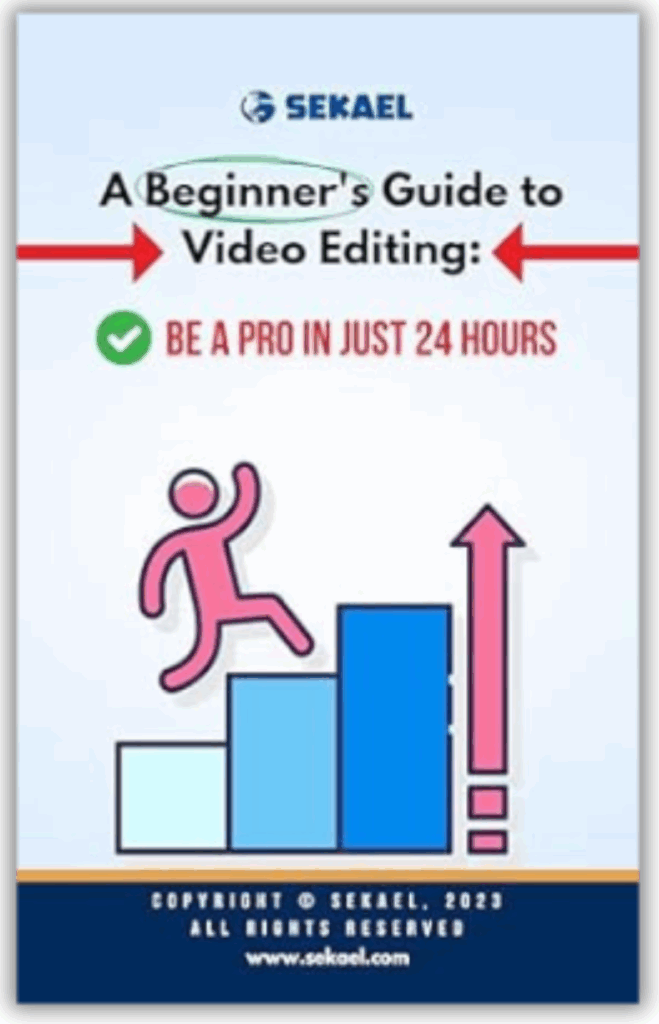





 The confusion primarily arises from their functions as subject and object pronouns. Many people mistakenly interchange “me” and “I,” leading to sentences that may sound awkward or incorrect. For instance, it’s common to hear someone say, “Me and John went to the store,” instead of the grammatically correct “John and I went to the store.” While often overlooked in casual conversation, such mistakes can be problematic in formal writing and speech.
The confusion primarily arises from their functions as subject and object pronouns. Many people mistakenly interchange “me” and “I,” leading to sentences that may sound awkward or incorrect. For instance, it’s common to hear someone say, “Me and John went to the store,” instead of the grammatically correct “John and I went to the store.” While often overlooked in casual conversation, such mistakes can be problematic in formal writing and speech.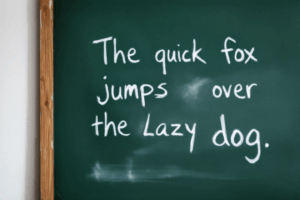
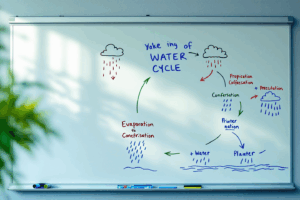






















 Understanding the correct usage of “me” and “I” is essential for clear and effective communication in English. Throughout this blog, we have explored the basic grammar rules governing these pronouns, identified common mistakes and misconceptions, and provided practical examples and exercises to enhance comprehension.
Understanding the correct usage of “me” and “I” is essential for clear and effective communication in English. Throughout this blog, we have explored the basic grammar rules governing these pronouns, identified common mistakes and misconceptions, and provided practical examples and exercises to enhance comprehension. To recap, “I” is used as a subject pronoun, performing the action in a sentence, while “me” is used as an object pronoun, receiving the action. Recognizing their roles in different sentence structures is key to avoiding common errors. We also delved into more complex scenarios, such as compound subjects and objects, and provided advanced exercises to reinforce proper usage.
To recap, “I” is used as a subject pronoun, performing the action in a sentence, while “me” is used as an object pronoun, receiving the action. Recognizing their roles in different sentence structures is key to avoiding common errors. We also delved into more complex scenarios, such as compound subjects and objects, and provided advanced exercises to reinforce proper usage. By practicing the tips and mnemonic devices shared in this blog, such as the “Remove the Other Person Test” and the “We and Us Trick,” you can confidently choose the correct pronoun in any context. Regular practice and attention to detail will make these rules second nature.
By practicing the tips and mnemonic devices shared in this blog, such as the “Remove the Other Person Test” and the “We and Us Trick,” you can confidently choose the correct pronoun in any context. Regular practice and attention to detail will make these rules second nature.

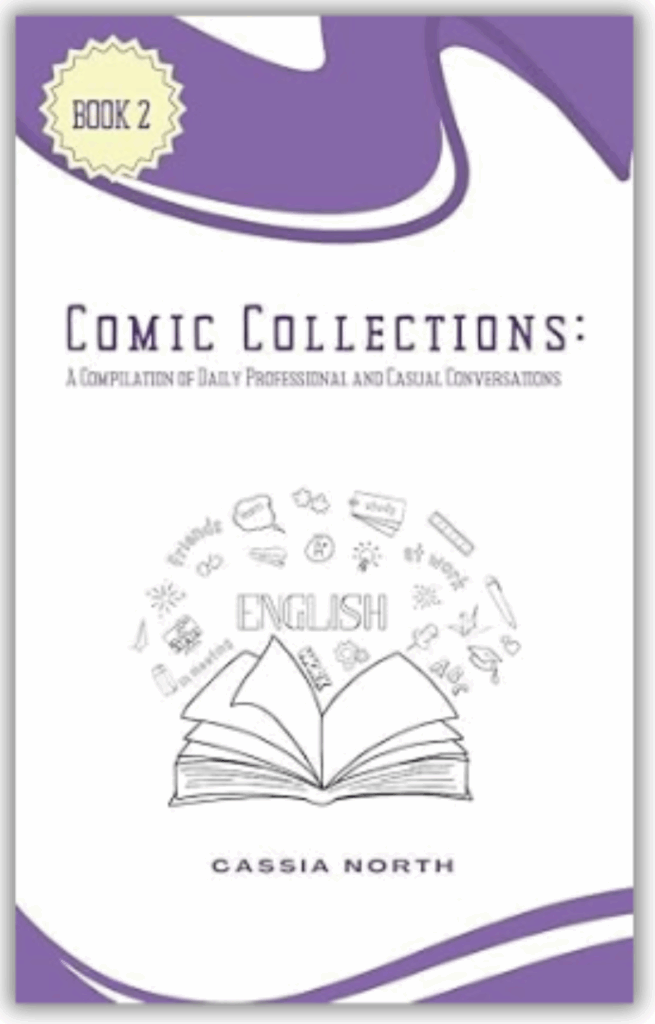

 In the fast-paced world of business, effective communication is key to success. Visual aids, such as presentations, infographics, and charts, play a valuable role in conveying complicated information succinctly and clearly. They not only enhance understanding but also engage the audience, making your message more memorable. However, the impact of these visual aids can be significantly diminished by poor grammar. Errors in grammar can distract the audience, undermine credibility, and obscure the intended message.
In the fast-paced world of business, effective communication is key to success. Visual aids, such as presentations, infographics, and charts, play a valuable role in conveying complicated information succinctly and clearly. They not only enhance understanding but also engage the audience, making your message more memorable. However, the impact of these visual aids can be significantly diminished by poor grammar. Errors in grammar can distract the audience, undermine credibility, and obscure the intended message. This blog will go through the important aspects of grammar in visual aids for business communication. We will discuss common grammar mistakes, key grammar rules, and practical tips for structuring text in various types of visual aids. Additionally, we will highlight tools and resources that can help you perfect your grammar and provide real-world examples to describe the importance of these principles. Let’s dive into the world of grammar for effective visual aids and elevate your business communication to the next level.
This blog will go through the important aspects of grammar in visual aids for business communication. We will discuss common grammar mistakes, key grammar rules, and practical tips for structuring text in various types of visual aids. Additionally, we will highlight tools and resources that can help you perfect your grammar and provide real-world examples to describe the importance of these principles. Let’s dive into the world of grammar for effective visual aids and elevate your business communication to the next level.
 In business presentations, the use of jargon can be a double-edged sword. While it can streamline communication among industry insiders, it often poses significant barriers to understanding for broader audiences. This section explores what jargon is and the negative impacts it can have on your presentations.
In business presentations, the use of jargon can be a double-edged sword. While it can streamline communication among industry insiders, it often poses significant barriers to understanding for broader audiences. This section explores what jargon is and the negative impacts it can have on your presentations. Avoiding jargon is essential for making your business presentations clear and accessible. Here are three practical techniques to help you identify and replace jargon, use analogies and examples, and seek feedback to ensure your language is inclusive and comprehensible.
Avoiding jargon is essential for making your business presentations clear and accessible. Here are three practical techniques to help you identify and replace jargon, use analogies and examples, and seek feedback to ensure your language is inclusive and comprehensible. Punctuation marks are essential for clarifying the meaning of sentences and ensuring that your visual aids are easily readable. Misplaced or missing punctuation can alter the intended meaning and confuse the audience.
Punctuation marks are essential for clarifying the meaning of sentences and ensuring that your visual aids are easily readable. Misplaced or missing punctuation can alter the intended meaning and confuse the audience. Maintaining consistent tense and tone throughout your visual aids is vital for clarity and coherence. Shifts in tense and tone can confuse the audience and disrupt the flow of information.
Maintaining consistent tense and tone throughout your visual aids is vital for clarity and coherence. Shifts in tense and tone can confuse the audience and disrupt the flow of information. When we say parallelism, it involves using the same grammatical structure for similar elements within a list or series. This technique enhances readability and ensures that your visual aids are logically organized.
When we say parallelism, it involves using the same grammatical structure for similar elements within a list or series. This technique enhances readability and ensures that your visual aids are logically organized.


 Bullet points and numbering are powerful tools for breaking down complex information into digestible pieces. They enhance clarity and make it easier for the audience to follow your points.
Bullet points and numbering are powerful tools for breaking down complex information into digestible pieces. They enhance clarity and make it easier for the audience to follow your points.
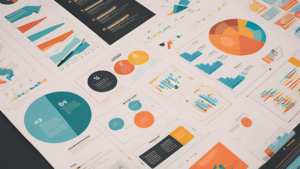







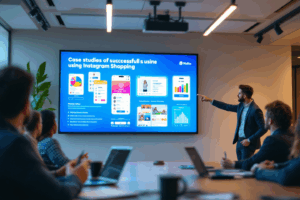









 In summary, effective visual aids rely on correct grammar to enhance clarity, professionalism, and engagement. Key points include maintaining subject-verb agreement, proper punctuation, consistent tense and tone, and parallelism. Additionally, structuring text with clear headings, white space, and bullet points, while avoiding common pitfalls, is crucial. Utilizing grammar tools, style guides, and training resources can further improve your presentations. By prioritizing grammar, you can elevate your business communication, ensuring your visual aids are impactful and professional. Implement these practices to achieve clearer, more effective, and credible business presentations.
In summary, effective visual aids rely on correct grammar to enhance clarity, professionalism, and engagement. Key points include maintaining subject-verb agreement, proper punctuation, consistent tense and tone, and parallelism. Additionally, structuring text with clear headings, white space, and bullet points, while avoiding common pitfalls, is crucial. Utilizing grammar tools, style guides, and training resources can further improve your presentations. By prioritizing grammar, you can elevate your business communication, ensuring your visual aids are impactful and professional. Implement these practices to achieve clearer, more effective, and credible business presentations.




 Millions of people around the world are suffering from an unseen widespread loneliness. In an age where technology promises to keep us more connected than ever, the paradox of increasing loneliness is both striking and concerning. The fast-paced nature of modern life, combined with significant societal changes, has led to a rise in individuals feeling isolated despite being physically and virtually surrounded by people.
Millions of people around the world are suffering from an unseen widespread loneliness. In an age where technology promises to keep us more connected than ever, the paradox of increasing loneliness is both striking and concerning. The fast-paced nature of modern life, combined with significant societal changes, has led to a rise in individuals feeling isolated despite being physically and virtually surrounded by people. This blog dives deep into loneliness: what it is, why it happens, and how to deal with it. We’ll explore the feeling itself, its causes and effects, and equip you with practical tools to manage and even overcome it. From building meaningful connections to enhancing self-care and developing a positive mindset, readers will find actionable insights to help them navigate and alleviate loneliness, paving the way toward better mental well-being.
This blog dives deep into loneliness: what it is, why it happens, and how to deal with it. We’ll explore the feeling itself, its causes and effects, and equip you with practical tools to manage and even overcome it. From building meaningful connections to enhancing self-care and developing a positive mindset, readers will find actionable insights to help them navigate and alleviate loneliness, paving the way toward better mental well-being.









 Acceptance is a powerful tool for managing loneliness. Embracing loneliness without judgment involves acknowledging it as a natural part of the human experience rather than a personal failing. This can be achieved through:
Acceptance is a powerful tool for managing loneliness. Embracing loneliness without judgment involves acknowledging it as a natural part of the human experience rather than a personal failing. This can be achieved through:










 Cultivating a positive mindset is crucial in coping with loneliness and enhancing mental well-being. A positive outlook can significantly influence how you perceive and handle feelings of isolation. Three effective practices for developing a positive mindset include keeping a gratitude journal, using positive affirmations, and setting small, achievable goals.
Cultivating a positive mindset is crucial in coping with loneliness and enhancing mental well-being. A positive outlook can significantly influence how you perceive and handle feelings of isolation. Three effective practices for developing a positive mindset include keeping a gratitude journal, using positive affirmations, and setting small, achievable goals.


 Cultivate a positive outlook for better mental well-being. Techniques like expressing gratitude, using positive affirmations, and setting goals can be incorporated into your daily routine. These practices can contribute to a more positive mindset, which is valuable in combating loneliness and promoting overall mental health. These practices shift your focus toward positivity and empower you to take proactive steps toward a fulfilling and connected life.
Cultivate a positive outlook for better mental well-being. Techniques like expressing gratitude, using positive affirmations, and setting goals can be incorporated into your daily routine. These practices can contribute to a more positive mindset, which is valuable in combating loneliness and promoting overall mental health. These practices shift your focus toward positivity and empower you to take proactive steps toward a fulfilling and connected life. Addressing loneliness is a journey that involves self-awareness, building connections, enhancing self-care, and developing a positive mindset. By understanding the different types and causes of loneliness, recognizing its signs, and embracing it without judgment, we lay the foundation for coping effectively. Self-awareness and acceptance are critical first steps in this journey.
Addressing loneliness is a journey that involves self-awareness, building connections, enhancing self-care, and developing a positive mindset. By understanding the different types and causes of loneliness, recognizing its signs, and embracing it without judgment, we lay the foundation for coping effectively. Self-awareness and acceptance are critical first steps in this journey. In conclusion, tackling loneliness is a multifaceted process that requires intentional effort and commitment. Individuals can significantly improve their mental well-being by taking proactive steps and utilizing the strategies discussed. Conquering loneliness and reaching mental well-being is a marathon, not a sprint! Every small step you take is a victory on the path to a happier, healthier you. Embrace the journey with hope and determination, knowing you hold the power to build meaningful connections and create a life that feels fulfilling.
In conclusion, tackling loneliness is a multifaceted process that requires intentional effort and commitment. Individuals can significantly improve their mental well-being by taking proactive steps and utilizing the strategies discussed. Conquering loneliness and reaching mental well-being is a marathon, not a sprint! Every small step you take is a victory on the path to a happier, healthier you. Embrace the journey with hope and determination, knowing you hold the power to build meaningful connections and create a life that feels fulfilling.




































